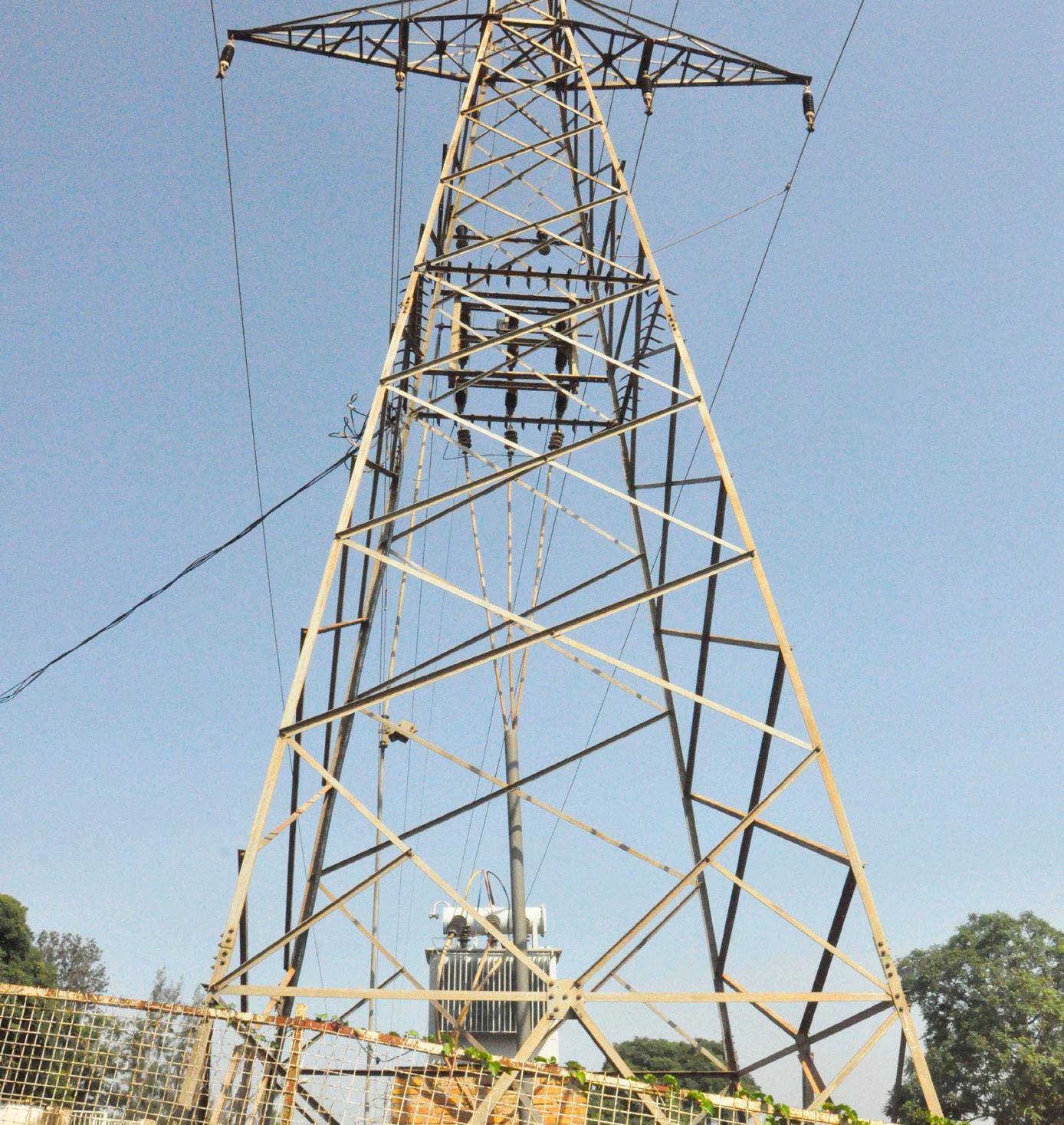
4 minute read
Rwanda taps into EA Power sources
Integration News Rwanda To Tap Into EA Power Sources
Rwanda’s disturbing power shortages may soon begin to dwindle when it begins receiving high voltage electricity from Kenya, Uganda and Ethiopia, something that is expected to spur rapid private sector output. Plans to import power from the three East African countries are ripe with initial agreements already in place to allow Rwandawhose power shortage has been blamed as one of the thorny challenges to the growth of the private sector- meet its energy needs.
Advertisement
With an ambitious target to connect 70 percent of the Rwandan households to the national electricity grid by end 2017 from the current 22%-which requires increasing installed capacity from the current 119 Megawatts (MW) to 563MW over the next three years-Rwanda is currently exploring all possible sources of electricity, ranging from locally available sources such as hydro, Geothermal, Methane gas, Solar and Peat energy to the importation of electricity from the region. The Ministry of Infrastructure (Mininfra) which is propelling the energy development agenda for the country has been working tirelessly to make sure that not only are local power generation projects implemented, but also the planned power importations are realised without failure.
To ensure smooth running and follow-up of the planned regional power flow to Rwanda, the Ministry has a focal point in charge of coordinating Regional Energy Projects. Eng. Tom Rwahama is the Regional Energy Projects Coordinator at the Ministry of Infrastructure.
With past experience in renewable energy, Eng. Rwahama is a brilliant young Rwandan whose passion to developing workable solutions to addressing Rwanda’s energy challenges is spot on. He says that Rwanda is targeting regional power exchanges through the Northern Corridor Infrastructure Projects framework which Rwanda signed with her counterparts Kenya and Uganda. “A tripartite MOU [Memorandum of Understanding] between the Governments of Rwanda, Uganda and Kenya was signed in October 2013,” he wrote in an email to Integration Affairs Magazine. “Also, the Government of Rwanda and the Government of the Federal Democratic Republic of Ethiopia signed an MOU of up to 400MW power trading in the near future,” Eng. Rwahama further noted.
He further revealed that currently, the Government of Rwanda is
Rwanda to benifit from Regional power projects
Integration News
finalising a 30MW power deal with the Government of Kenya with commercial operations expected to commence by the last quarter of 2015.
The Power Purchase Agreement between Nairobi and Kigali was signed in December 2014 in Nairobi, paving way for Kenya’s power distributor to export 30 MW of electricity to Rwanda. Rwanda, Kenya and Uganda through their Joint Steering Committee (JSC) have manifested high-level political commitment to support the sharing of energy resources, with Rwanda being the highly placed beneficiary. The three governments invited consultants to submit expressions of interest in October 2014 to carry out a feasibility study in each of the three countries for the proposed harmonization of 400kV (kiloVolt) power transmission lines in Kenya, Uganda and Rwanda. The Request for Expression of Interest (REOI) followed the agreement to implement 400kV transmission lines between Olkaria in Kenya and Birembo in Rwanda through Uganda to facilitate the regional power trade. Once implemented, the project, one of the most important under the northern tripartite arrangement, shall result into completion of the 400kV power grid backbone in the three partner states of the East African Community (EAC). According to the REOI seen by Integration Affairs Magazine, this power interconnection project aims to accelerate regional development through power exchange. “The 400kV lines will interconnect Kenya, Uganda and Rwanda to allow power transmission capacity of over 500MW, improve reliability
and security of supply in the region, and improve operational and technical performance of the interconnected grid and hence promote regional cooperation through sharing of resources,” the REOI reads in part. The REOI further says that the successful consultant shall make an assessment of energy needs of Uganda, Kenya, and Rwanda and import or export potential within the region with a focus on the market situation up to year 2035. The consultant’s report shall include potential import or export scenarios within the East African Power Pool (EAPP) region. Eng. Rwahama says that the existing power transmission infrastructure in the regional countries is mainly made up of 220kV lines but some sections of 132kV transmission lines in Uganda are being upgraded to 220kV.
In Rwanda, he said, the 220kV transmission lines are currently under construction and expected to be completed by October 2015. Rwanda and Kenya are also negotiating the 30MW Power Purchase Agreement (PPA) and negotiations should have beeen finalised by December 2014. He said 30MW as an initial power trade plan should be due by the last quarter of 2015, and more than 30MW by December 2016 when some of the bottlenecks such as upgrading the transmission lines, have been removed.
Upgrading of the system corridor to 400kV should be completed by 2017, he said.
“In the near future, the bigger plan is to upgrade the entire system corridor/Interconnector to 400kV which will allow power exchanges of more than 300MW in the region,” he said. He further revealed that the 220kV power transmission lines from Kenya through Uganda to Rwanda will pass through Kagitumba in Nyagatare District, Ngarama Sector in Gatsibo District, and Rutare Sector in Gicumbi District, all in the Eastern Province respectively, and all the way to Shango in Gasabo District in the City of Kigali.
With an ambitious target to connect 70 percent of the Rwandan households to the national electricity grid by end 2017 from the current 22 percent, which requires increasing installed capacity from the current 119 Megawatts (MW) to 563MW over the next three years, Rwanda is currently exploring all possible sources of electricity, ranging from locally available sources such as hydro, Geothermal, Methane gas, Solar and Peat energy to the importation of electricity from the region. ”










